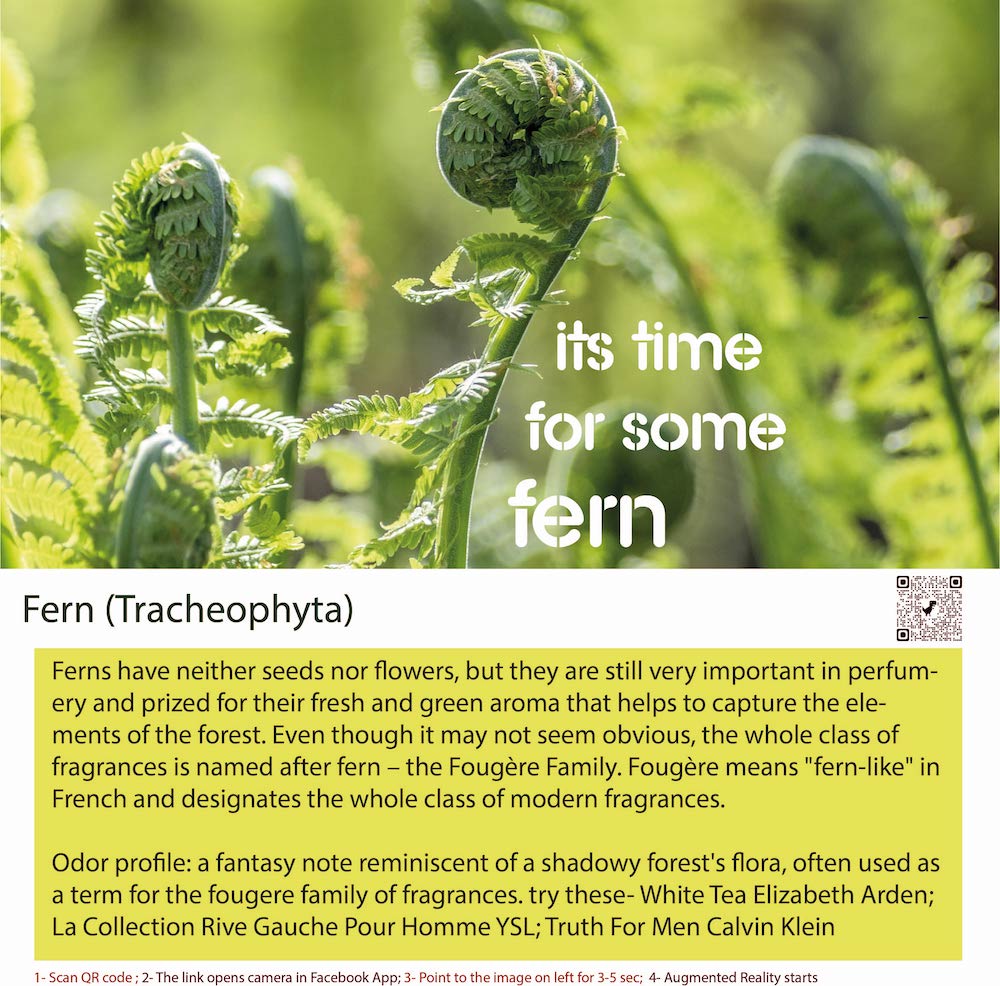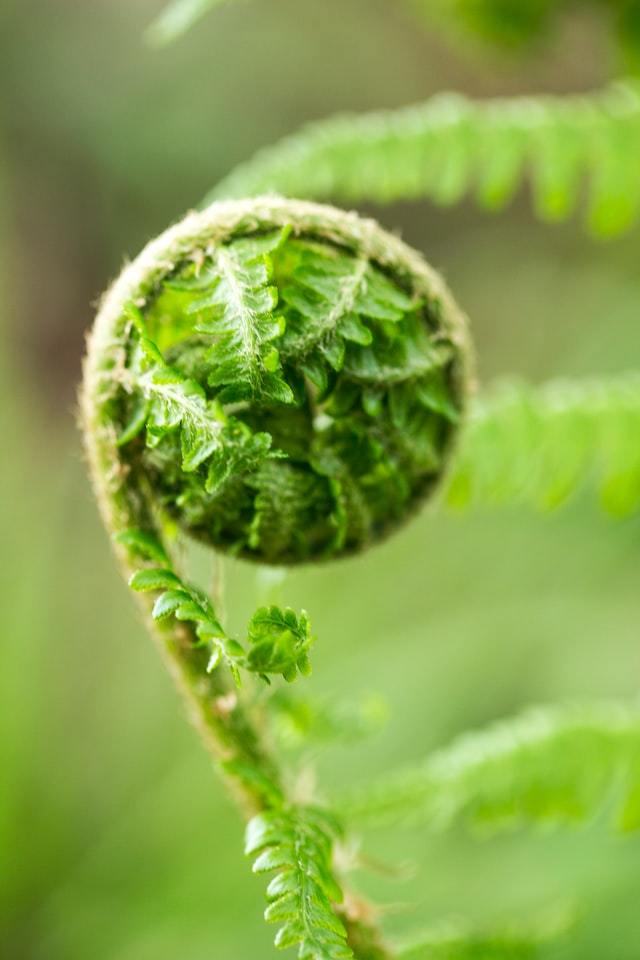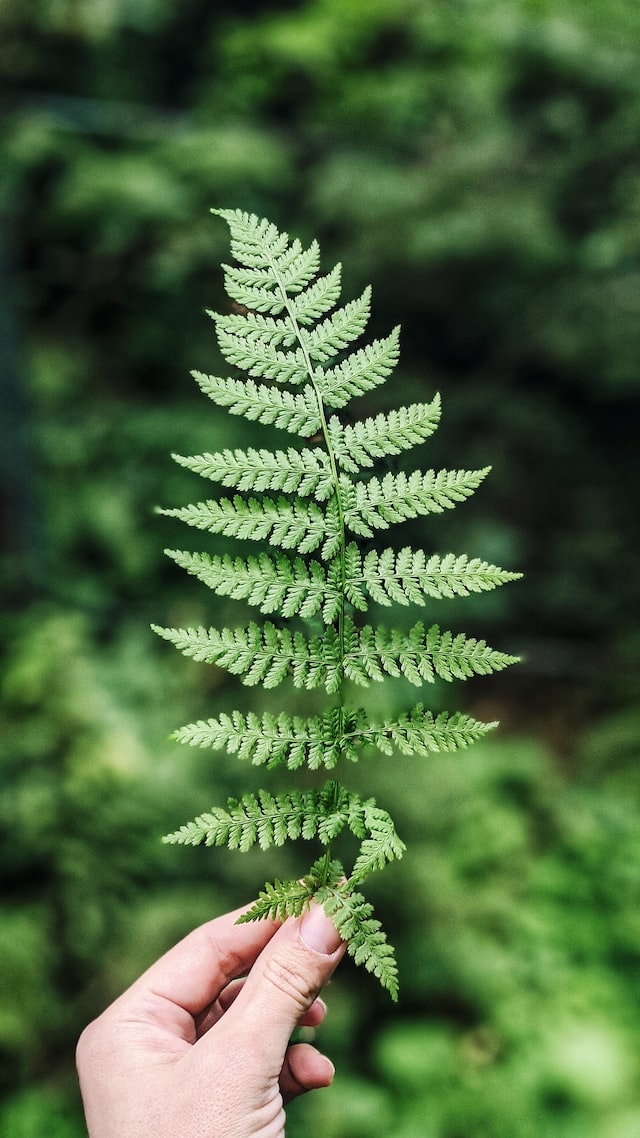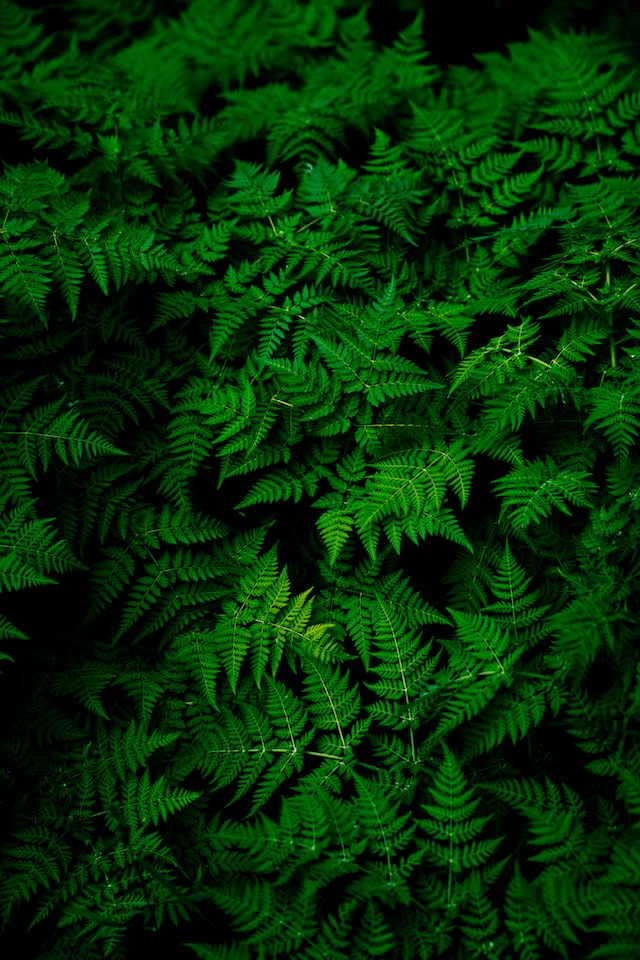Elevate Your Fragrance Experience with Fern Scent Notes
Fern: The Ancient Green Beauty - From Perfumes to Fun Crazy Facts
Ferns, a group of ancient and elegant plants, have been an integral part of the Earth's landscape for millions of years. Their exquisite fronds and lush greenery have captivated humans throughout history. Ferns have found their place in various domains, including perfumes, fragrance, therapeutic oils, food, medicinal systems, history, and even fun crazy facts. In this article, we embark on a journey to explore the captivating allure of ferns, uncovering their diverse uses and intriguing characteristics that have fascinated people around the world.
1. Fern in Perfumes and Fragrance
While ferns themselves do not produce a distinct fragrance, their lush and earthy presence has inspired perfumers to create fragrances that capture the essence of a serene and verdant forest. Fern-inspired fragrances often incorporate notes like moss, woods, and green accords to evoke a sense of nature and tranquility.
2. Fern in Therapeutic Oils
Ferns are not commonly used in aromatherapy or therapeutic oils, as their essential oils are scarce and not widely available. However, some fern species are believed to have medicinal properties in traditional folk medicine, especially among certain indigenous communities.
3. Fern in Culinary Delights
Ferns are not typically used as a primary ingredient in culinary creations. However, certain fern varieties, like fiddleheads (young, coiled fern fronds) are consumed as a delicacy in some regions. Fiddleheads are enjoyed for their tender texture and unique flavor, often likened to a combination of asparagus and green beans.
4. Fern in Medicinal Systems
Ferns have a long history of use in traditional medicine for their potential health benefits. In various cultures, ferns have been utilized to treat conditions like skin disorders, respiratory ailments, and digestive issues. It is essential to note that while ferns have been used traditionally, their medicinal uses may not always be supported by modern scientific evidence.
5. Historical Significance of Fern
Ferns have a rich history dating back to prehistoric times. Fossil evidence shows that ferns were already flourishing on Earth during the Devonian period, approximately 360 million years ago. Their ancient origins make them one of the oldest plant groups on the planet.
6. Fun and Crazy Facts about Fern
a. Fern and Fossil Fuel: Coal, one of the world's primary fossil fuels, has its origins in ancient ferns and other plant material that accumulated and transformed over millions of years.
b. Symbol of Resilience: Ferns are often associated with resilience and perseverance, as they have thrived for millions of years, adapting to various environmental changes.
c. Fern Spores: Unlike flowering plants that reproduce through seeds, ferns produce tiny spores, which are released and dispersed into the air to grow new ferns.
d. Ferns in Art and Symbolism: Ferns have been used as decorative motifs in various art forms, and in some cultures, they are considered symbols of humility and sincerity.
e. Ferns in Folklore: In certain folklore, ferns were believed to have magical properties, including the ability to confer invisibility to those who carried them.
Ferns, with their ancient beauty and diverse applications, stand as nature's green treasures cherished across various domains. From inspiring fragrances that evoke the tranquility of a lush forest to their historical significance and intriguing fun facts, ferns continue to captivate and inspire. Whether they are admired for their resilience in the face of millennia or enjoyed as a unique culinary delicacy, ferns' allure lies in their enduring presence and cultural significance. As we celebrate ferns' contributions to various aspects of human life, they stand as a reminder of the marvels of the natural world and the profound connection between humanity and the ancient green beauty that surrounds us.
Ferns, a group of ancient and elegant plants, have been an integral part of the Earth's landscape for millions of years. Their exquisite fronds and lush greenery have captivated humans throughout history. Ferns have found their place in various domains, including perfumes, fragrance, therapeutic oils, food, medicinal systems, history, and even fun crazy facts. In this article, we embark on a journey to explore the captivating allure of ferns, uncovering their diverse uses and intriguing characteristics that have fascinated people around the world.
1. Fern in Perfumes and Fragrance
While ferns themselves do not produce a distinct fragrance, their lush and earthy presence has inspired perfumers to create fragrances that capture the essence of a serene and verdant forest. Fern-inspired fragrances often incorporate notes like moss, woods, and green accords to evoke a sense of nature and tranquility.
2. Fern in Therapeutic Oils
Ferns are not commonly used in aromatherapy or therapeutic oils, as their essential oils are scarce and not widely available. However, some fern species are believed to have medicinal properties in traditional folk medicine, especially among certain indigenous communities.
3. Fern in Culinary Delights
Ferns are not typically used as a primary ingredient in culinary creations. However, certain fern varieties, like fiddleheads (young, coiled fern fronds) are consumed as a delicacy in some regions. Fiddleheads are enjoyed for their tender texture and unique flavor, often likened to a combination of asparagus and green beans.
4. Fern in Medicinal Systems
Ferns have a long history of use in traditional medicine for their potential health benefits. In various cultures, ferns have been utilized to treat conditions like skin disorders, respiratory ailments, and digestive issues. It is essential to note that while ferns have been used traditionally, their medicinal uses may not always be supported by modern scientific evidence.
5. Historical Significance of Fern
Ferns have a rich history dating back to prehistoric times. Fossil evidence shows that ferns were already flourishing on Earth during the Devonian period, approximately 360 million years ago. Their ancient origins make them one of the oldest plant groups on the planet.
6. Fun and Crazy Facts about Fern
a. Fern and Fossil Fuel: Coal, one of the world's primary fossil fuels, has its origins in ancient ferns and other plant material that accumulated and transformed over millions of years.
b. Symbol of Resilience: Ferns are often associated with resilience and perseverance, as they have thrived for millions of years, adapting to various environmental changes.
c. Fern Spores: Unlike flowering plants that reproduce through seeds, ferns produce tiny spores, which are released and dispersed into the air to grow new ferns.
d. Ferns in Art and Symbolism: Ferns have been used as decorative motifs in various art forms, and in some cultures, they are considered symbols of humility and sincerity.
e. Ferns in Folklore: In certain folklore, ferns were believed to have magical properties, including the ability to confer invisibility to those who carried them.
Ferns, with their ancient beauty and diverse applications, stand as nature's green treasures cherished across various domains. From inspiring fragrances that evoke the tranquility of a lush forest to their historical significance and intriguing fun facts, ferns continue to captivate and inspire. Whether they are admired for their resilience in the face of millennia or enjoyed as a unique culinary delicacy, ferns' allure lies in their enduring presence and cultural significance. As we celebrate ferns' contributions to various aspects of human life, they stand as a reminder of the marvels of the natural world and the profound connection between humanity and the ancient green beauty that surrounds us.
To experience augmented reality, please open the Facebook-app using QR code and point to the image below
Ferns are a group of non-flowering, vascular plants that reproduce using spores. They have complex leaf structures called fronds, which are often feathery in appearance. Ferns are found in a wide range of habitats, including forests, wetlands, and even deserts. They are an ancient group of plants, with fossil evidence dating back to the Devonian period, over 360 million years ago. Many ferns are also considered to be ornamental plants and are commonly used in gardens and landscaping.
Embrace Nature's Tranquility with Fresh Woody Aromas
Fossil evidence shows that ferns were some of the first plants to colonize the land, and they were a dominant group of plants during the Carboniferous period, about 300 million years ago. During this time, ferns were larger and more diverse than they are today and formed dense swamps and forests.
Ferns have also played an important role in human history. Many cultures have used ferns for medicinal purposes, and they have been used to treat a wide range of ailments, including wounds, skin conditions, and respiratory problems. Ferns were also used as a food source in some cultures, and their spores were used as a source of leavening in bread making.
In more recent history, ferns have been popular in horticulture and gardening. Many species of ferns are now cultivated and hybridized for use as ornamental plants. Ferns are also important in the study of plant evolution and classification.
Overall, ferns have an important role in natural history, human history and still used for various purposes.
Ferns have also played an important role in human history. Many cultures have used ferns for medicinal purposes, and they have been used to treat a wide range of ailments, including wounds, skin conditions, and respiratory problems. Ferns were also used as a food source in some cultures, and their spores were used as a source of leavening in bread making.
In more recent history, ferns have been popular in horticulture and gardening. Many species of ferns are now cultivated and hybridized for use as ornamental plants. Ferns are also important in the study of plant evolution and classification.
Overall, ferns have an important role in natural history, human history and still used for various purposes.
Unveiling the Magic of Fern Aroma Accents
Ferns have been used for therapeutic purposes for centuries in traditional medicine. Different parts of ferns have been used to treat a wide range of health conditions, including wounds, skin conditions, respiratory problems, and gastrointestinal issues.
Research has shown that some ferns contain compounds with medicinal properties, such as flavonoids, terpenoids, and polysaccharides. These compounds have been found to have antioxidant, anti-inflammatory, and anti-cancer properties.
For example, the fronds of the bracken fern (Pteridium aquilinum) have been traditionally used to treat wounds and skin conditions. Studies have shown that compounds in the fronds have anti-inflammatory and antioxidant properties that may help to promote wound healing.
In addition, the fern genus Dryopteris contains the compound phenolic acids which has been found to have anti-inflammatory and analgesic effects.
The fern genus Polypodium leucotomos has been traditionally used to treat skin conditions such as eczema and psoriasis. Studies have shown that compounds in the fern have anti-inflammatory and antioxidant properties that may help to reduce skin inflammation.
It is important to note that not all ferns have medicinal properties and more research is needed to fully understand the therapeutic potential of ferns. Also, self-medication with ferns should be avoided and it is always recommended to consult with a healthcare professional before using any plant-based remedies.
Research has shown that some ferns contain compounds with medicinal properties, such as flavonoids, terpenoids, and polysaccharides. These compounds have been found to have antioxidant, anti-inflammatory, and anti-cancer properties.
For example, the fronds of the bracken fern (Pteridium aquilinum) have been traditionally used to treat wounds and skin conditions. Studies have shown that compounds in the fronds have anti-inflammatory and antioxidant properties that may help to promote wound healing.
In addition, the fern genus Dryopteris contains the compound phenolic acids which has been found to have anti-inflammatory and analgesic effects.
The fern genus Polypodium leucotomos has been traditionally used to treat skin conditions such as eczema and psoriasis. Studies have shown that compounds in the fern have anti-inflammatory and antioxidant properties that may help to reduce skin inflammation.
It is important to note that not all ferns have medicinal properties and more research is needed to fully understand the therapeutic potential of ferns. Also, self-medication with ferns should be avoided and it is always recommended to consult with a healthcare professional before using any plant-based remedies.
Fern fun facts:
- Ferns are ancient plants, with fossil evidence dating back over 360 million years. They were some of the first plants to colonize the land.
- Ferns are unique in that they reproduce via spores, rather than seeds. These spores are produced on the underside of the fronds, and when they mature, they are released and can be carried away by the wind.
- Some ferns are able to survive in extreme environments, such as deserts and high elevations. For example, the "rock brake" fern (Cryptogramma crispa) is able to survive in rocky and barren environments, and the "cliff brake" fern (Pellaea spp.) can be found growing on cliffs and rocky outcroppings.
- Ferns have a symbiotic relationship with certain types of fungi, called mycorrhizae, which help them to absorb nutrients from the soil.
- Some ferns are considered to be "living fossils" because they have remained largely unchanged for millions of years. One example is the "horsetail fern" (Equisetum spp.), which closely resembles fossils dating back to the Carboniferous period, over 300 million years ago.
- Ferns are also known to be used in traditional medicine as well as in ornamental plants and they are also used in agriculture as cover crops which can improve the soil quality.
- Ferns have also been used as food and in some cultures they are still used as food. They are also used as a source of leavening in bread making.
Fresh and Woody: The Heart of Fern Scent Note
Ferns have been used in perfumery for centuries. The ferns used in perfumery are usually ferns that have a high concentration of essential oils, such as the "spleenwort" fern (Asplenium spp.) and the "maidenhair" fern (Adiantum spp.).
Ferns are known to have a fresh, green, and woody scent, which is why they are often used in perfumes and colognes that have a "herbaceous" or "woodsy" fragrance. The scent of ferns is often described as mossy and earthy.
Ferns are also used in perfumery to add a natural and authentic touch to scents that are inspired by nature and the outdoors.
In addition, Ferns have been used as fixative in perfumery, a fixative is a substance that helps to prolong the life of a fragrance by slowing down the evaporation of its volatile components.
It is important to note that not all ferns can be used for perfumery and it is always recommended to consult with an expert before using any ferns in perfumery. Also, it is important to be aware of the ferns species and their habitat, some ferns may be endangered and it is important to not exploit or contribute to their extinction.
Ferns are known to have a fresh, green, and woody scent, which is why they are often used in perfumes and colognes that have a "herbaceous" or "woodsy" fragrance. The scent of ferns is often described as mossy and earthy.
Ferns are also used in perfumery to add a natural and authentic touch to scents that are inspired by nature and the outdoors.
In addition, Ferns have been used as fixative in perfumery, a fixative is a substance that helps to prolong the life of a fragrance by slowing down the evaporation of its volatile components.
It is important to note that not all ferns can be used for perfumery and it is always recommended to consult with an expert before using any ferns in perfumery. Also, it is important to be aware of the ferns species and their habitat, some ferns may be endangered and it is important to not exploit or contribute to their extinction.
Crafting Botanical Perfumes: The Art of Fern Scent
There are several well-known perfumes that feature ferns as a key ingredient. Here are a few examples:
- "Fern" by Penhaligon's: This classic fragrance was first introduced in 1911 and is still a popular choice today. It has a woodsy, mossy scent that is inspired by the lush green fern forests of the British Isles.
- "Fougère Royale" by Houbigant: This is considered as one of the first fern-inspired fragrance. It was first introduced in 1882 and features a complex blend of lavender, oakmoss, and tonka bean, which creates a fresh, masculine scent that is reminiscent of a fern forest.
- "Fern" by Floris: This is a modern take on the classic fern scent, it features a blend of fern, green leaf, and moss, which creates a fresh, green, and woodsy fragrance.
- "Fern" by Miller Harris: This fragrance features a blend of fern, moss, and vetiver, which creates a fresh, earthy, and woodsy scent.
- "Fern" by Penhaligon's Portraits: This fragrance is a unisex scent and features a blend of fern, moss, and cedarwood, which creates a fresh, woodsy, and mossy fragrance.
Join Scentopia, Sentosa's latest tourist attraction wonderful orchid scent crafting, fragrance tour, bridal shower or corporate team building which includes perfume making onsite and offsite, beach activities and more. We also serve primary school learning journey, secondary students and pupil on industrial excursions. Know more about our orchids perfume bar or therapeutic orchid scents and other wellness aromas. Conatct Perfume workshop or book a scent crafting session here.







